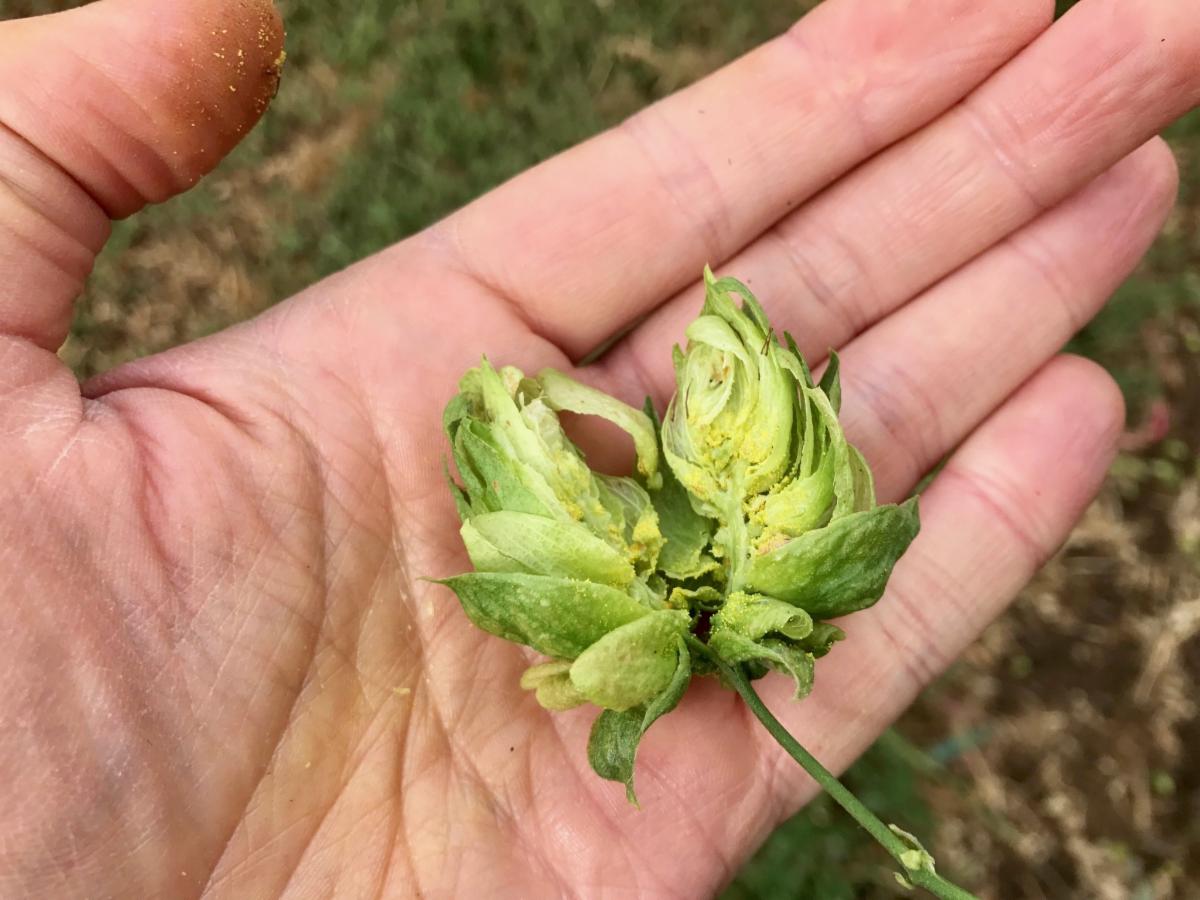Picking Apart the Hop: Loral
Brewing beer is both an art and a science.
While it takes a meticulous hand to determine the exact amount of each element needed to execute a perfectly balanced brew, it also takes a creative mind to craft an innovative recipe from just four ingredients.
This innovation has been helped along by farmers who are also constantly working to grow unique and novel variations of malts and hops.
But, as craft beer consumers, how can you tell if a flavor your experiencing is from a malt or a hop? And, even further, which varietal is it?
Well, we’re here to help with just that!
In our Picking Apart the Hop series we’ve been breaking down different varietals – starting with Fuggle hops and then exploring Centennial hops – to learn more about the specific notes they bring to the beer they are in. Next up, we’re looking at Loral hops.
 First, A Little Background
First, A Little Background
Hops are the flower, or cone, of the female hop plant – humulus lupulus. They contain alpha acids and essential oils that bring bitterness, flavor and stability to beer. Their flavor can range from fruity to floral to funky.
They are generally separated into two categories: bittering and aroma.
Hops used primarily for bittering generally have higher alpha acids and are added during the beginning of the boil stage, as it takes a long time to release these flavors. The increased time at high temperatures tends to lead to a higher conversion rate of the hop alpha acids to isomerized alpha acids, thus providing a more efficient bitter in the final beer.
Hops used for aromatics generally have more essential oils and are added later in the brew, so the oils don’t boil off. Hops added just for flavor are added in between the two.
As with many plants, each variety of hop varies in flavor, aroma, bitterness and intensity level of any or all three of these characteristics.
Make-Up of the Loral Hop
Let’s learn a little more about Loral hops!
The Loral hop was created by the Hop Breeding Company, a joint venture between John I. Haas, Inc. and Yakima Chief Ranches, LLC. Both dedicated to hop research and expansion, the two companies merged in 2003. The Loral variety, known as HBC 291 at the time, was one of the first plants the company bred. It was not released to market, however, until 2016.
A cross between the Glacier and Nugget varietals, it is said by HBC to have a “noble heritage.” This is because the Glacier varietal is a descendant of a rare, old hop – Tardif De Bourgogne. This French hop had floral flavors, such as lavender and chamomile, and light fruit notes. The Nugget varietal, on the other hand, is a new world hop, possessing more spicy and citrusy flavors.
Because of this, Loral hops are predominantly citrus-forward with light floral and spicy notes. In fact, it is these two main characteristics – lemon and floral – that gave the hop its name: Loral.
Though high in alpha acids, which attribute to bitterness, it can also possess higher essential oils, which is great for aromatics. This makes the varietal extremely versatile, and a brewer favorite.
 “The Loral varietal has a very nice balanced noble hop character that lends itself very well to traditional European styles, such as Pils and Kolsch. That spicy note combines with bright New World citrus and floral characteristics and provides a unique profile to the hop overall,” Chief Brewing Officer Damian McConn said.
“The Loral varietal has a very nice balanced noble hop character that lends itself very well to traditional European styles, such as Pils and Kolsch. That spicy note combines with bright New World citrus and floral characteristics and provides a unique profile to the hop overall,” Chief Brewing Officer Damian McConn said.
When you think lemon and floral, it should be no surprise that this hop is used in our Summit Dakota Soul Craft Lager, Cabin Crusher Kölsch-Style Ale with Lime, Cabin Crusher Kölsch-Style Ale with Lemon and Lake Crusher Tangerine. While all very balanced beers, each has a bright citrus note, with a cereal-bready and somewhat grassy, spicy after taste.
So, next time you take a sip of any of those brews see if you can pick out the Loral hop notes!


Leave a Reply